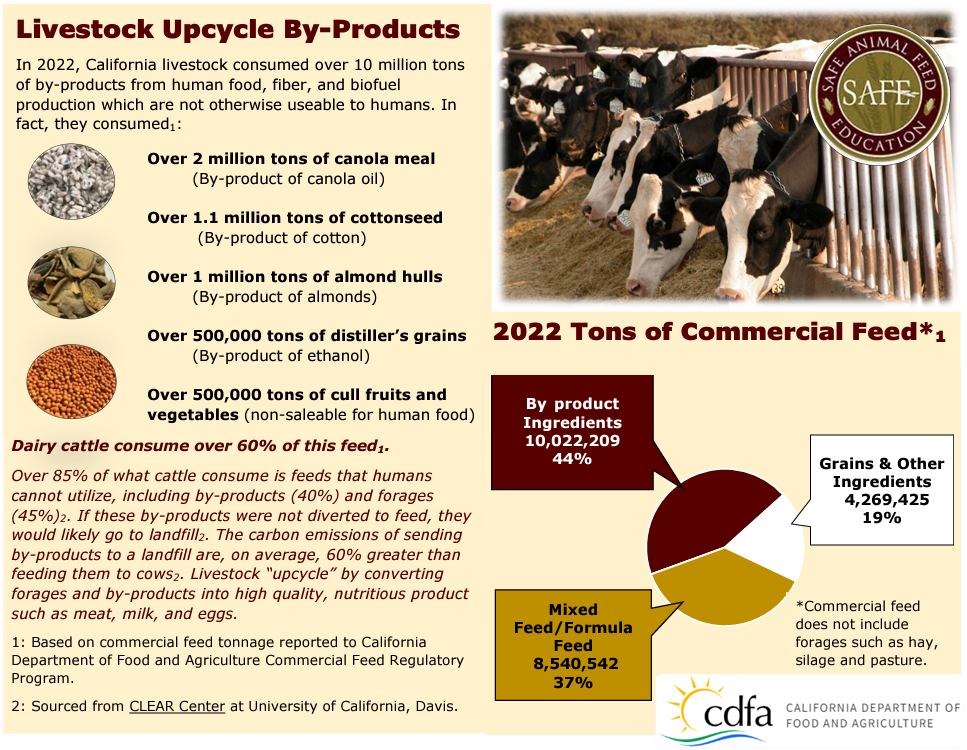California leads the nation in production of nuts, fruits, vegetables, wine, and beer. Processing these foods creates various “by-products” such as fruit pulp/pomace, almond hulls, brewer’s grains, and other products not consumed by humans. The California livestock feed industry has been sustainably up-cycling for generations by converting forages and by-products into high quality, nutritious products such as meat, milk, and eggs.
Livestock, particularly ruminants (cattle), have digestive systems which can utilize the remaining nutritional value in such food waste. Over 85% of what cattle consume is feeds that humans cannot utilize, including by-products (40%) and forages (45%)2. California is also a leader in the United States (U.S.) in the production of milk, butter, ice cream, cheese, and yogurt. Diversion of by-products to livestock feed creates an up-cycling opportunity which converts the food waste into a local supply of meat, milk, and eggs for California’s 39 million residents.
Diversion of by-products to livestock feed is a sustainable process with several benefits:
- The reduction of food waste into landfill, compost, or other industries which are less preferred by U.S. Environmental Protection Agency’s ‘Food Recovery Hierarchy’ compared to feeding animals
- The reduction of carbon emissions since sending by-products to a landfill, on average, emits 60% greater carbon than feeding them to cows2
- Reduces the need for importation of traditional feedstuffs for California livestock
- Provides an affordable feed alternative which is crucial for the success of California ranching and farming families, which is especially critical amid flooding, drought, and supply chain volatility

In 2022, the California livestock feed industry diverted over 10 million tons of by-products directly to livestock feed1. An additional 8.5 million tons were fed to livestock as mixed feed, which is made up of many by-product ingredients1. The SAFE Program is funding a study for University of California, Davis, to help quantify the availability of by-products in California and the capacity for the feed industry to use them.
View the infographic to learn more about by-products that were up-cycled by livestock in 2022: https://www.cdfa.ca.gov/is/ffldrs/docs/by-products_use_by_livestock.pdf
1: Based on commercial feed tonnage reported to California Department of Food and Agriculture Commercial Feed Regulatory Program.
2: Sourced from CLEAR Center at University of California, Davis.


